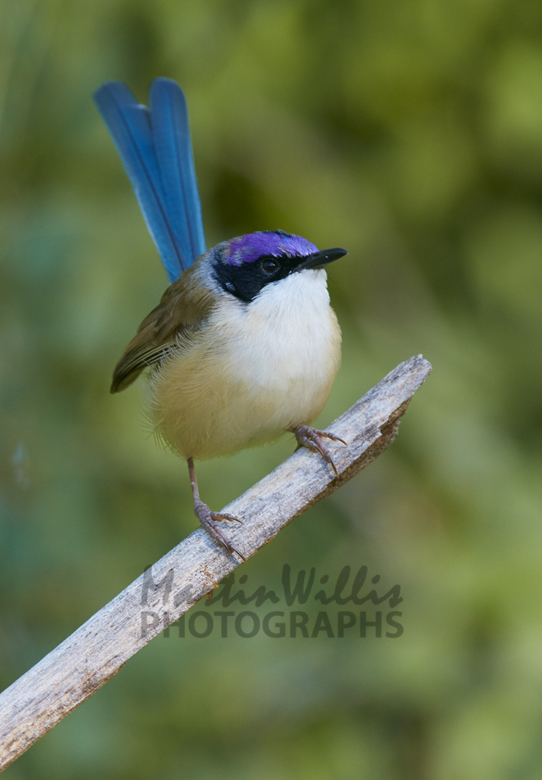

On the top of the head is a black rectangular patch. The male in breeding plumage has a purple crown bordered by a black nape and face. The plumage is brown overall, the wings more greyish brown. However, genetic evidence shows it is most closely related to the Superb and Splendid Fairywren within the genus Malurus.

Its distinctive plumage led Mathews to place it in a separate genus Rosina. The two subspecies are separated by around 200 km of land inhospitable to them, and have been so for around 10,000 years. named by Gregory Mathews in 1913, from the lands bordering the Gulf of Carpentaria. Its species name is derived from the Latin cǒrōna "crown". The nominate subspecies is found in the Kimberley region of northwestern Australia, and the subspecies macgillivrayi. Two specimens were collected at Victoria River and a third at Robinson River which was not examined for over 100 years. It was first described by the ornithologist John Gould in 1858. Gregory's northern Australian expedition in 18. Elsey was the first to collect the species, on A. It is endemic to northern Australia two subspecies are recognized.The surgeon J. What the scientists are most interested in, however, is what shortens the telomeres.Ī paper they are currently working on suggests that hot weather paired with a lack of rainfall has resulted in the wrens being born with shorter telomeres.The Purple-crowned Fairywren ( Malurus coronatus) is a species of bird in the Maluridae family. They shorten and deteriorate with age, which is why humans have a lot of interest in studying them.īy studying the telomeres of a purple-crowned fairy-wren you can find out how long it will live and how many young it’ll produce. All species, including humans, have them. Telomeres are structures found at the end of a chromosome. Since 2018, the team have been studying the telomeres of the wrens. On more than one occasion the scientists have watched as nests are flushed down river. “It gets them to breed, but if there’s too much rain their nests get flooded,” she says. (Image credit: Niki Teunissen/AWC) Land of drought and flooding rainsīy now, the research team has witnessed their fair share of wet seasons, which Anne describes as a double-edged sword for the birds’ breeding success. It begs the question: what’s with the crown?

Purple-crowned fairy-wrens, however, don’t cheat. Superb fairy-wrens that transform into their striking blue breeding colours earlier in the year are preferred by females when looking to cheat on their partners. Then there’s that beautiful purple crown. Purple-crowned fairy-wrens, on the other hand, have comparably smaller testes. The male superb fairy-wren faces tough competition to fertilise an egg because his partner will almost certainly have mated with another male so he has to produce huge amounts of sperm, which results in his testes swelling to five per cent of his body weight. That they don’t need to compete as hard as their counterparts for a mate has resulted in significant evolutionary diversions from other wrens. Restricted to these riparian corridors of the Kimberley, it’s likely purple-crowned fairy-wrens are limited by their location and the number of available mates, making it both difficult and stupid to cheat on a partner.


 0 kommentar(er)
0 kommentar(er)
